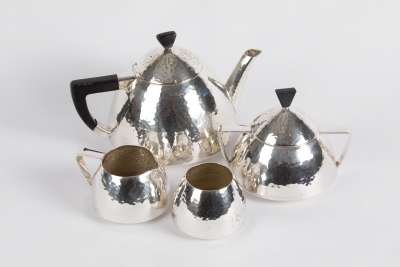This Georgian Tortoiseshell Folding Magnifying Glass, circa 1800, exemplifies English craftsmanship. The piece features a tortoiseshell casing complemented by silver mounts, serving both decorative and structural purposes. Its compact design integrates a magnifying lens, reflecting the blend of elegance and utility characteristic of the Georgian period.
Condition Report
The magnifying glass remains in good condition, exhibiting expected wear for an item of its age. The tortoiseshell casing shows minor imperfections, including a small defect, yet maintains its unique pattern and sheen. The silver mounts, while slightly tarnished, remain secure and intact, indicating typical characteristics of antique silver. The lens is clear, free from significant scratches or blemishes, ensuring continued functionality.
Dimensions
Weight: 0.050gms, Length: 7cm, Width: Closed 6cm extends to 11cm in length opened, Height: 1cm.
An Essential Tool in the Georgian Era
Folding magnifying glasses were essential during the late 18th and early 19th centuries for reading small print or examining art, maps, and manuscripts. The compact design allowed for easy portability, making it a convenient accessory for scholars, merchants, and artisans engaged in detailed work.
Georgian Elegance and Craftsmanship
This piece reflects the luxurious materials favoured during the Georgian era, incorporating tortoiseshell and silver. Tortoiseshell was valued for its visual appeal and used in personal items like combs and snuff boxes. The silver mounts highlight the metalworking skills of the period, adding decorative detail to practical objects. The design demonstrates the Georgian preference for classical forms and refined craftsmanship.
Crafting Techniques of the Georgian Period
Creating this magnifying glass required skilled craftsmanship in working with tortoiseshell and silver. Tortoiseshell, admired for its unique pattern, was shaped and polished for a smooth finish. The silver mounts, possibly produced through chasing or engraving techniques, were expertly affixed to the casing, providing both decorative and functional benefits.
Maker Unknown
The maker of this magnifying glass remains unidentified, a common occurrence for personal accessories from the Georgian period. Many artisans crafted such items without signature marks. The quality of materials and craftsmanship suggests it was produced by a skilled artisan in workshops across England or Europe, showcasing high artistic and functional design standards.
Collected by Enthusiasts of Georgian Material Culture
Antique magnifying glasses from the Georgian era are valued by collectors for their historical significance and as tangible representations of the era's material culture. These pieces offer insight into the daily lives and personal accessories of individuals from that time. Collecting such items helps preserve the artistry and craftsmanship characteristic of the Georgian period, often highlighted in institutions like the Victoria and Albert Museum.














